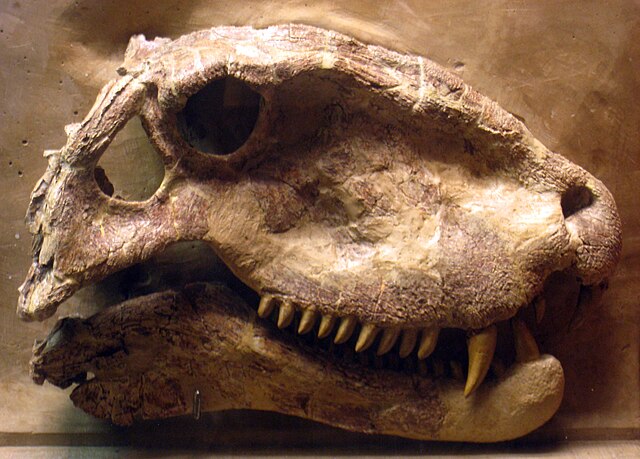Red Beds of Texas and Oklahoma
The Red Beds of Texas and Oklahoma are a group of Early Permian-age geologic strata in the southwestern United States cropping out in north-central Texas and south-central Oklahoma. They comprise several stratigraphic groups, including the Clear Fork Group, the Wichita Group, and the Pease River Group. The Red Beds were first explored by American paleontologist Edward Drinker Cope starting in 1877. Fossil remains of many Permian tetrapods have been found in the Red Beds, including those of Dimetrodon, Edaphosaurus, Seymouria, Platyhystrix, and Eryops. A recurring feature in many of these animals is the sail structure on their backs.
Edaphosaurus pogonias and Platyhystrix
Edaphosaurus boanerges fossil skeleton from Archer County, on display in Harvard Museum of Natural History
Seymouria baylorensis skeleton
Dimetrodon is an extinct genus of non-mammalian synapsid belonging to the family Sphenacodontidae that lived during the Cisuralian age of the Early Permian period, around 295–272 million years ago. With most species measuring 1.7–4.6 m (5.6–15.1 ft) long and weighing 28–250 kg (62–551 lb), the most prominent feature of Dimetrodon is the large neural spine sail on its back formed by elongated spines extending from the vertebrae. It was an obligate quadruped and had a tall, curved skull with large teeth of different sizes set along the jaws. Most fossils have been found in the Southwestern United States, the majority of these coming from a geological deposit called the Red Beds of Texas and Oklahoma. More recently, its fossils have also been found in Germany and over a dozen species have been named since the genus was first erected in 1878.
Dimetrodon
Restoration of D. giganhomogenes with exposed neural spine tips
A skull of D. grandis
Two D. grandis skeletons, Royal Tyrrell Museum







